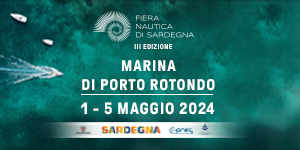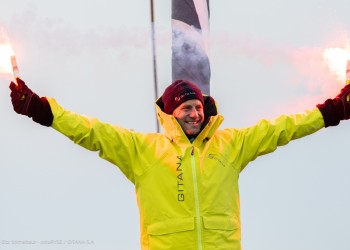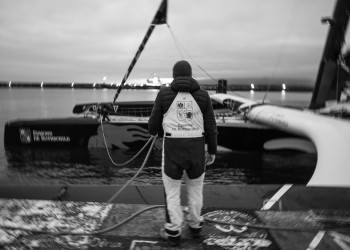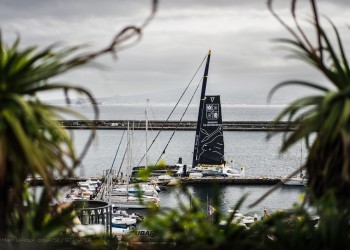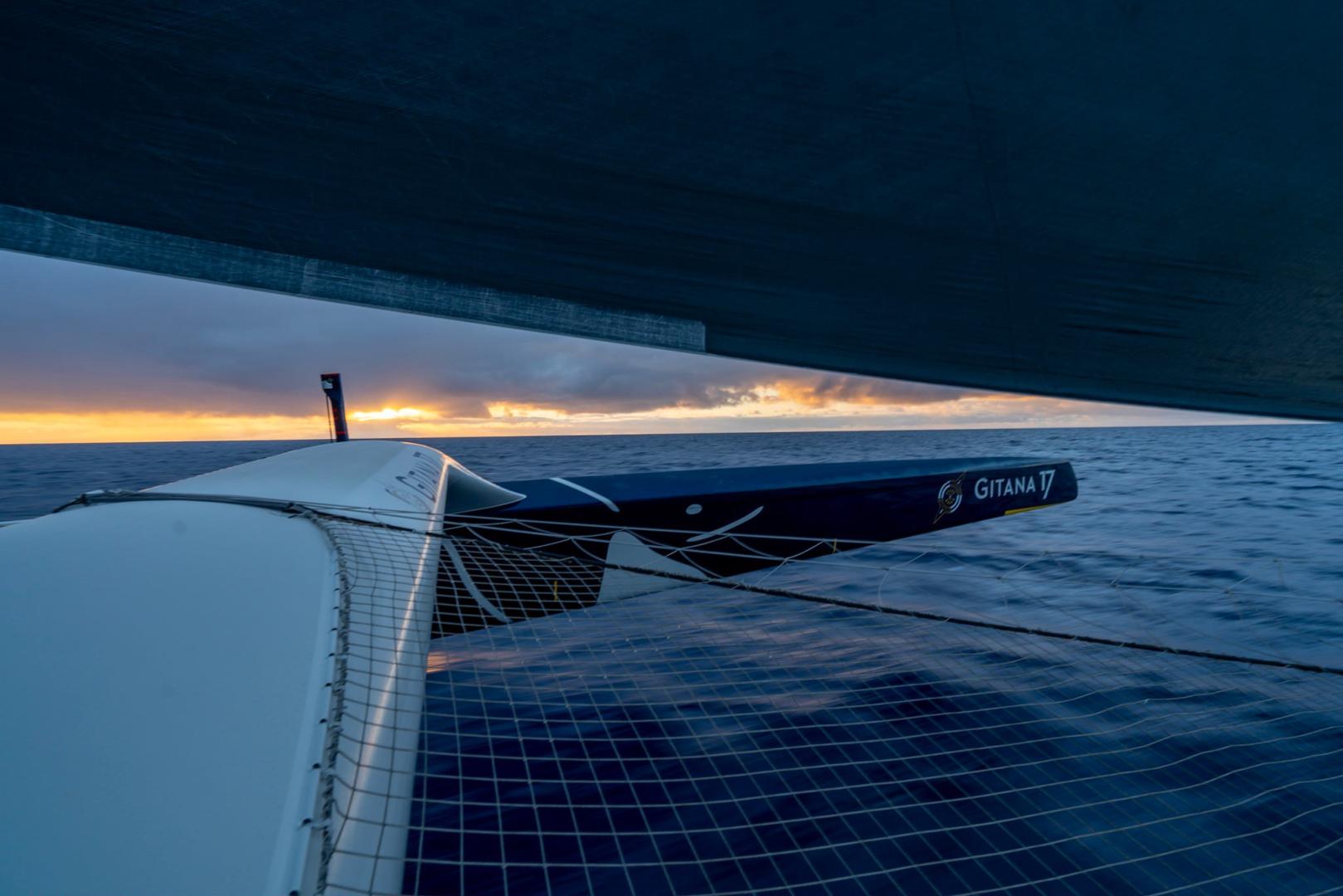
Brest Atlantiques - Traffic separation at Saint Helena
Brest Atlantiques - Traffic separation at Saint Helena
The newly-formed Brest Atlantiques trio is continuing its slow climb up towards the equator from Cape Town. Still leading the way, the Maxi Edmond de Rothschild boasts a 244-mile lead over Actual Leader to her East and a 650-mile lead over Macif, which yesterday decided to try its luck to the West. Though the weather scenario for this return to the northern hemisphere is not the easiest of passages to negotiate for the crews, who are having to get the best out of a breeze that is as light as it is unstable, the resulting game of strategy is further spicing up the race after twenty days at sea.
All roads lead to the equator
Late yesterday, Franck Cammas was explaining the latest meteorological and strategic situation in front of Yann Riou’s camera as the crew embarks on this second section of the climb up the South Atlantic. “We saw on the rankings that Macif had gybed twice with a median course to the south-west. Gybing in this spot clearly signified that it was taking a completely different option to the one that everyone had appeared to be on for several days… namely the one we’re on and which Actual is also in the process of following.” The skipper’s suppositions have since been confirmed.
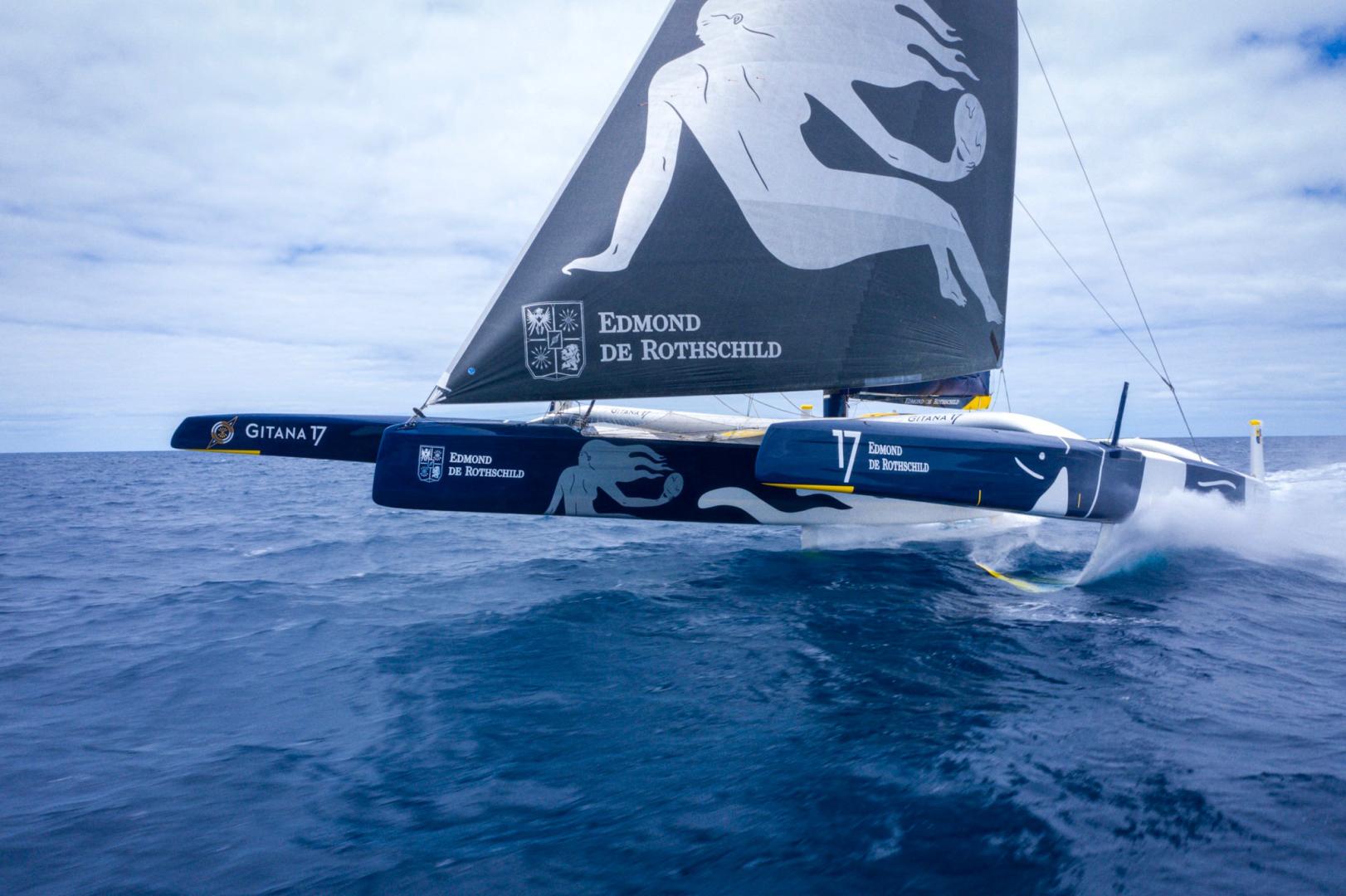
“There’s a front bordering our zone (note: ‘bordering our zone’ is just a figure of speech since it is 1,000 miles from the position of the Maxi Edmond de Rothschild) and once that rolls through we will have a SSW’ly breeze off the back of it. For sure, one of the models shows the optimum course as passing through this front and hence really heading a long way off the direct course we’re currently on. It’s going to have its work cut out on that course as it’s far from easy,” assured the skipper of Edmond de Rothschild. “It makes no difference though to us. We’re not in the same place as him, at the same time, so our optimum course is different to his.”
Biding one’s time
The South Atlantic and the Saint Helena High certainly hasn’t let the sailors competing in this 1st edition of the Brest Atlantiques off lightly! Indeed, during the descent between Rio and Cape Town, the northerly rounding of a fine depression and the positioning of the high pressure a long way south had already made life difficult for them. As such, the fleet had hoped they’d already paid their dues… However, this was without taking into account the scenario put forward by the Saint Helena High – yet again! – on the homeward passage: “It’s not quick! The centre of the anticyclone is currently situated 660 miles to the North-West of Cape Town, so it’s not in its normal position and is not very solid at 1021 hPa.
Towards Brazil, there’s a low-pressure front that has formed and is dropping towards the forties and South Africa. The combination of these two phenomena is causing a complete rupture of the SE’ly trade winds. This in turn is making our progress towards the equator quite long! We’re set to get back into the northern hemisphere on Wednesday night through into Thursday”, explained Marcel van Triest, router for Gitana Team.
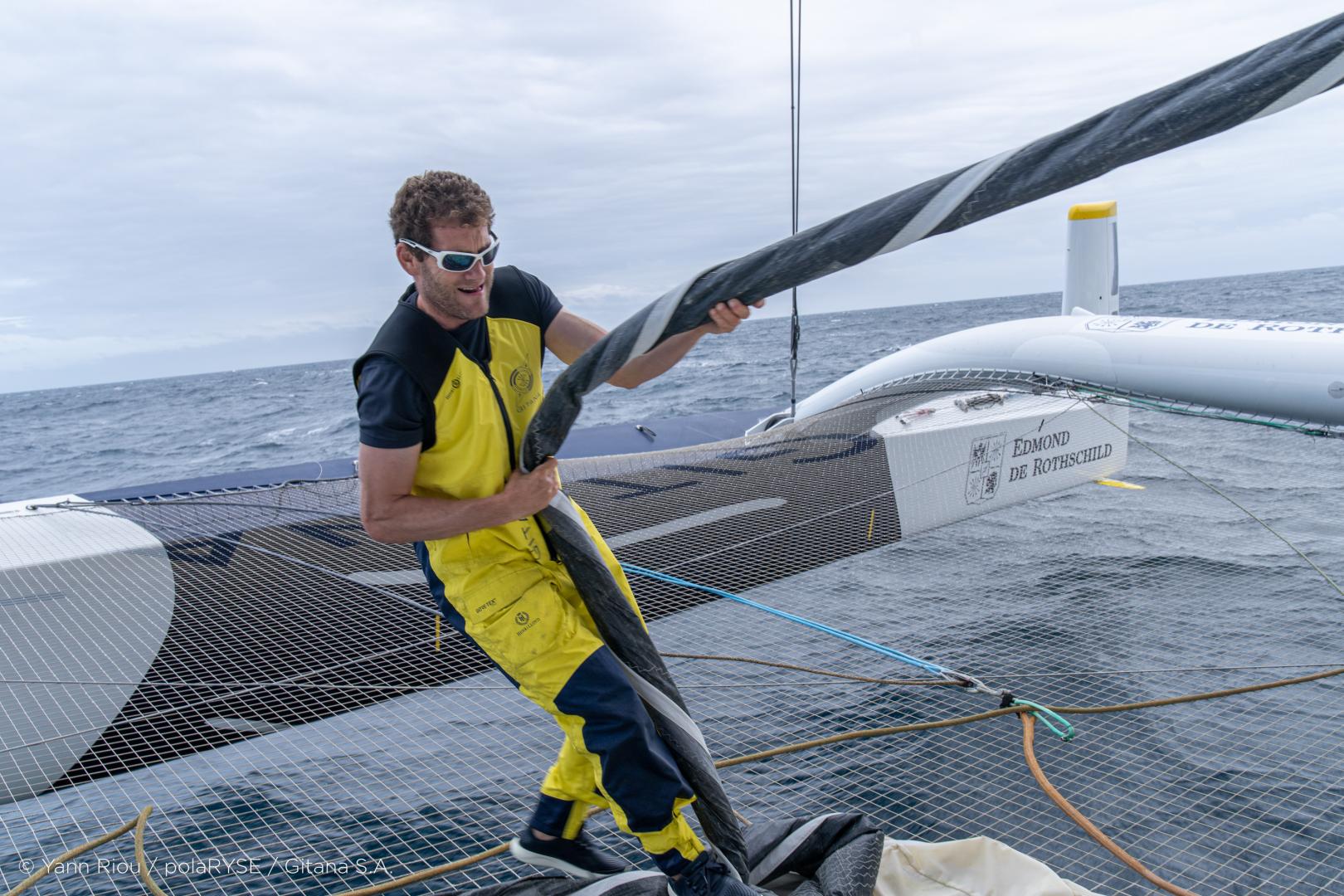
It is possible to helm one of the fastest boats on the planet, but when the weather conditions are not lined up to enable a quick passage towards the goal, there’s no other option than to bide your time and above all make the most of any opportunities offered up by the variations in the breeze throughout the day. This is a notion that Franck Cammas never forgets: “Part of the appeal of offshore racing is that it’s not just a drag race… even if going quick often helps. Offshore racing is primarily all about weather and strategy. There are a lot more gains to be made thanks to weather choices. It’s like a game of chess with things you don’t always control. Even though there’s a lot of theory involved, in practice it’s about sensitivity and experience and a human touch, all of which colour the strategic choices.”





